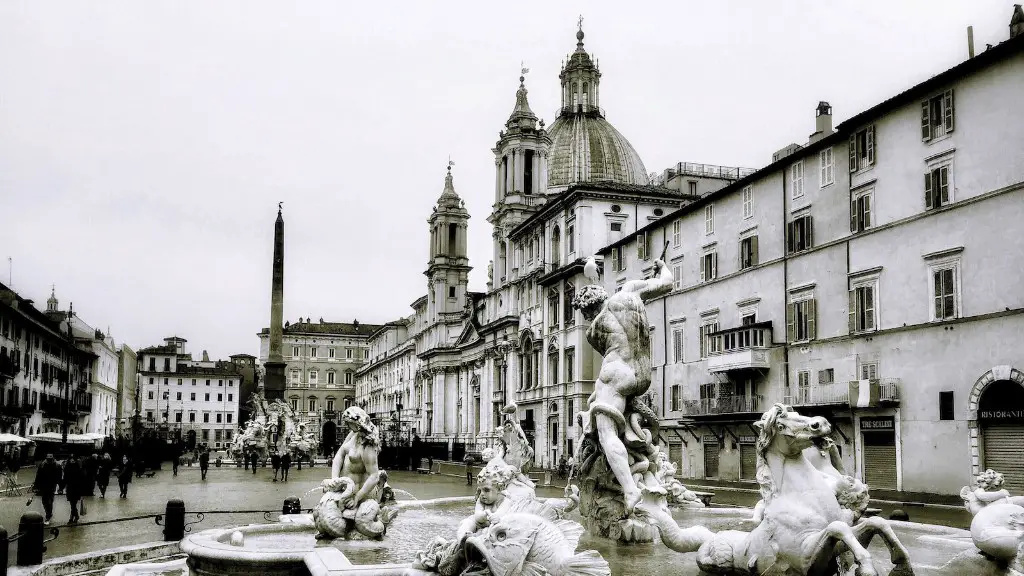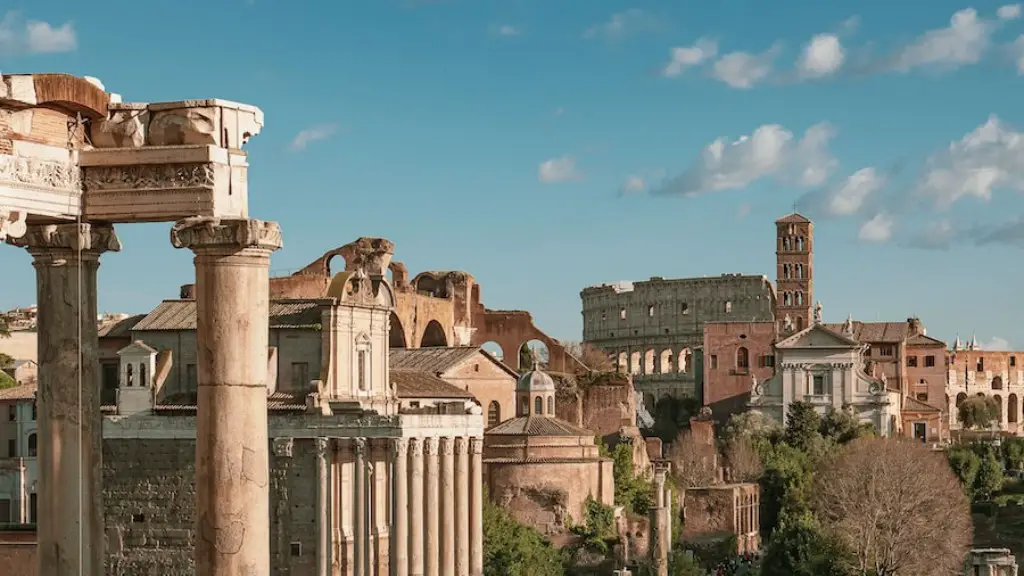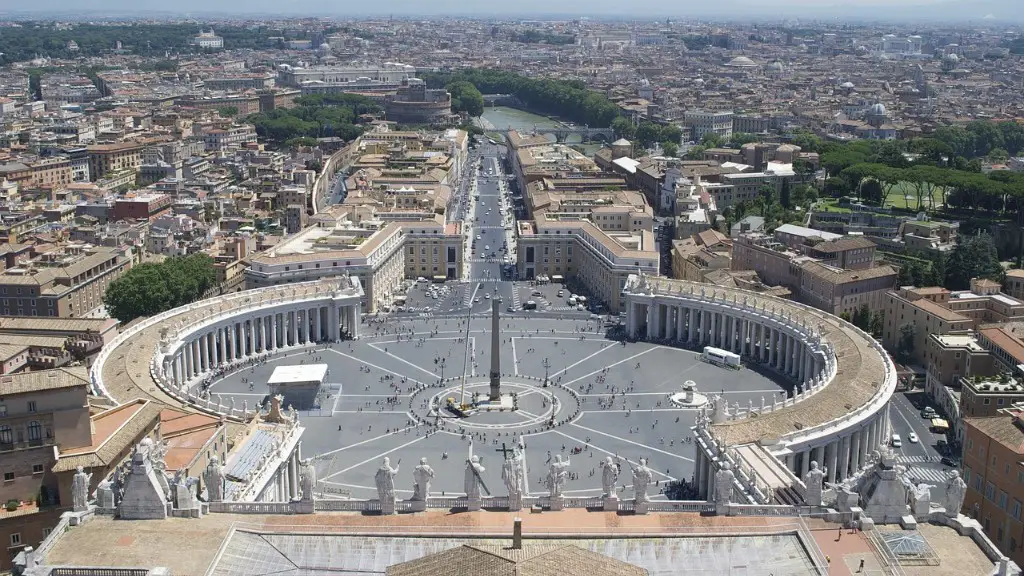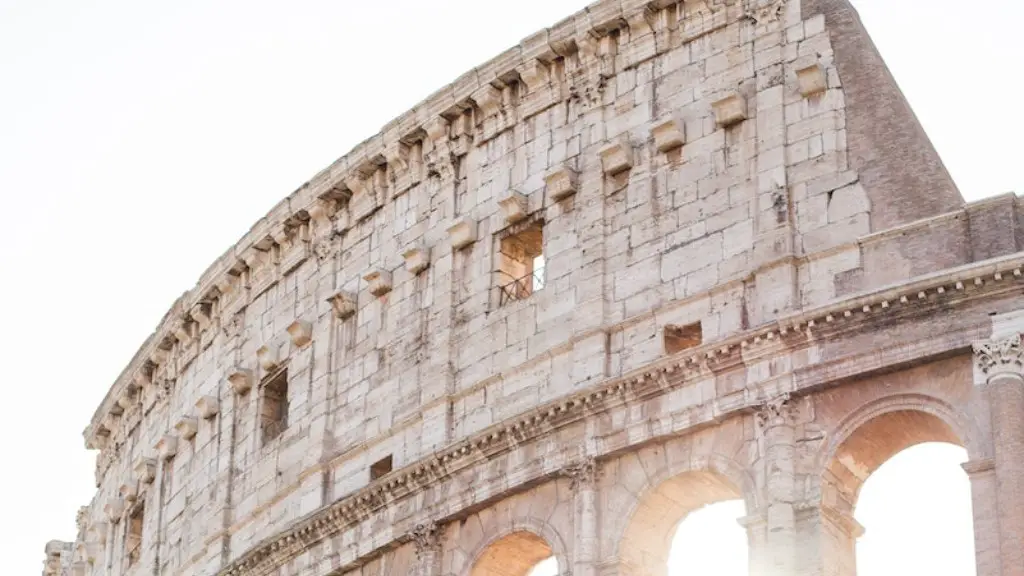Throughout its history, Rome had many physical barriers that made it difficult for invaders to conquer. One of the most significant of these barriers was the Alps. The Alps are a major mountain range in Europe that stretches from Austria and Slovenia in the east, through Italy, Switzerland, Liechtenstein, and Monaco in the west. The highest peak in the Alps is Mont Blanc, which is over 15,000 feet tall. For centuries, the Alps served as an impenetrable barrier between Rome and the rest of Europe. Even today, the Alps are considered to be one of the most formidable mountain ranges in the world.
The Alps served as a natural barrier to protect Rome from northern invaders.
Did the Alps protect Rome?
In the winter, when the snow blocked the passage from the rest of Europe to Rome, the Apennines provided protection and natural resources for the Romans. The Apennines are a mountain range that stretches from northern to southern Italy, and they served as a barrier between Rome and the rest of Europe. This protected Rome from invasion and allowed the Romans to thrive. The Apennines are still a major part of Italy today, and they are a popular destination for tourists.
The Alpes were a group of small provinces set up by the Romans in the western Alps. The provinces were established sometime after the conquest of the Ligurian tribes in the area in 14 bc. Augustus established Alpes Maritimae (Maritime Alps) under a prefect (later a procurator) to guard the coastal road from Italy to southern France.
How did the Alps protect Europe and the Romans from each other
The Alps have long been a formidable barrier against invaders, protecting Rome and the Italian peninsula from would-be conquerors. The narrow passes and steep slopes make it difficult for armies to move through the mountains, giving the Romans time to mount a defense. In recent years, the Alps have continued to provide protection, as they have been a deterrent to migrants and refugees seeking to enter Europe.
The Apennine Mountains are a chain of mountains that runs north to south along the Italian peninsula. The mountains made it difficult for people to cross from one side of the peninsula to the other, which helped to protect Rome from outside attacks.
What did the Alps provide for Rome?
The Alps and Apennine mountain ranges were natural barriers that helped protect Rome from invasions and provided strategic locations during war time. The Alps provided a roadblock that forced invaders to move through narrow passages allowing Romans time to prepare and attack. The Apennines were used as a natural boundary between Rome and other civilizations which prevented surprise attacks. These mountain ranges were integral to the defense of Rome and helped them maintain their power during antiquity.
The Alps are a key source of water for lowland Europe, providing drinking water, irrigation, and hydroelectric power. Although the Alps only make up about 11% of Europe’s surface area, they provide up to 90% of the water to lowland Europe. Major European rivers flow from the Alps, including the Rhine, the Rhône, the Inn, and the Po. The Alps are an important part of Europe’s water infrastructure, and their importance is only likely to grow in the future as the climate changes and water becomes an increasingly scarce resource.
What is the Alps famous for?
If you’re looking for breathtaking scenery and crystal clear waters, then you’ll definitely want to add the Alps to your travel list! With its stunning lakes, towering mountains and abundance of outdoor activities, it’s no wonder that this region is one of the most popular tourist destinations in the world. So whether you’re looking to hit the slopes or simply take in the awe-inspiring views, be sure to pay a visit to the Alps – you won’t be disappointed!
The integration of the Alpine region into the Roman Empire was a gradual process that began in 35 BC and continued until 6 BC. During this time, the Romans slowly but surely conquered or assimilated the various tribes that inhabited the mountains. The Tropaeum Alpium, a monument located in La Turbie, celebrates the Roman victory over the 46 tribes of the Alps.
How were the Alps important to the Romans and in what ways are they significant to humans today
The Romans made great strides in infrastructure and engineering, constructing roads, bridges, and aqueducts that blanketed their empire. They also built large public gathering places such as arenas and theatres. The best preserved of these is in Aosta. Control of the Alpine passes allowed the Romans to easily expand their empire, and they built roads to connect all parts of their territory.
The Alps play an important role in the economy of Europe, providing goods and services that are essential for the continent. In addition to supplying water and hydroelectricity, the Alps are also a major producer of agricultural goods, handicrafts, and recreation. The Alps are also a hotspot of biodiversity, with many endemic species.
What did Romans call the Alps?
Noricum was a province in the Eastern Alps that was incorporated into the Roman Empire in 16 BC. The mountains above the plains of Venetia were taken earlier, in the times of Julius Caesar to Octavian Augustus. The province was peaceful and the incorporation was largely successful.
Hannibal was a great military commander who led his troops on a daring march across the Alps to attack Rome. This was an incredible feat of military engineering and strategy, and it ultimately led to the downfall of the Roman Empire.
Which mountain ranges were important to Rome and why
The Alps and Apennines were important in protecting Rome from invasion. The Alps formed a natural barrier along the northern border, and the Apennines stretched from northern Italy to southern Italy. The rugged mountains made it difficult for invaders to pass through.
Rome was protected by natural geographic barriers, including the Italian Alps to the north and the Apennines to the east. This made it difficult for enemies to invade, and helped to keep Rome safe.
How did mountains affect life in Italy?
The mountains in Italy have had a long history of affecting the lives of its people. The rugged land made it hard for ancient people to cross from one side of the peninsula to the other. The also had some volcanic mountains, whose eruptions could devastate Roman towns.
More than 2000 years ago, the Romans made their conquest through the Alps. The Alps are a significant geographical feature in Europe, and their history is fascinating. The Romans were able to use the Alps to their advantage in their conquests, and their story is a great example of the importance of geography in history.
How did the Alps help Hannibal
Hannibal knew that the descent into the Alps would be steeper than the ascent, and this was one of the reasons he wanted to have allies whose territory he could march into. Having allies would give him a better chance of making it through the Alps and into Italy.
The Alps have long been a protective barrier for Italy, helping to keep the country separate from the rest of Europe. This has allowed Italy to develop its own unique culture and history.
Conclusion
The Alps provided Rome with a strategic defensive position against invaders from the north. Additionally, the mountains served as a natural barrier against invasions from the east.
The Alps provided Rome with a natural barrier against invasions from the north, and the rivers that flow from the Alps supplied Rome with much-needed water for its growing population. The Alps also served as a source of marble and other minerals, which were used extensively in Roman architecture and engineering. Overall, the Alps were an important part of Rome’s physical and economic landscape.





